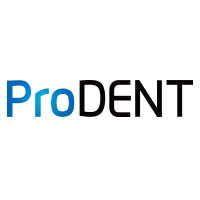Comparing intraoral camera systems Posted on 1 Jun 03:31 , 0 comments
As dentists continue their move towards a chartless or paperless practice, they are incorporating many newer technologies which assist in this goal. However, many fail to realize that there are systems which have been around for some time, but they have evolved considerably during the past few years. While digital radiography is getting most of the recent attention, the number of offices using intraoral cameras is estimated to be at least four times the number of offices with digital radiography! Most offices using intraoral cameras find them to be indispensable, so it makes sense to evaluate the various camera systems available to find the best fit.
Are intraoral cameras still viable?
In a word, yes. The biggest competition to intraoral cameras has been the plummeting cost of extraoral digital cameras. The image quality of these extraoral cameras is typically far better than any intraoral camera; resolution is higher and the shutter speed is quite a bit faster. However, the main advantages of the intraoral camera are its ease of use and how quickly you can see the images. With an intraoral camera, you can have an image on the screen in a few seconds. With digital extraoral cameras, you need to turn on the camera, use retractors and/or mirrors, frame the shot, take the picture, and then download the image into your software. Hygienists and staff usually prefer the intraoral cameras because of this. I do feel both systems are a great addition to any practice, and that each has its own ideal clinical application.
Fiberoptic
The first and still most popular camera systems on the market are the fiberoptic systems. These systems typically use very high-end optical systems to produce the best image quality possible. The light source is in a separate “box,” and with a fiberoptic cable running from the box to the handpiece. Until very recently, these were the only type of intraoral camera systems available. While the image quality is above average to excellent with most camera systems, there are a few reasons why some offices didn’t find these cameras to be a good fit for them. The camera and box are quite heavy, and they are difficult to move from operatory to operatory. Some of the original camera systems were so heavy that a cart containing all of the components (camera, light source, monitor, and printer) was suggested as the best way to handle this issue. As any dentist knows, though, when the camera isn’t a few inches from your fingers when you want to use it, it’s not going to be used as much as it should be. One of the solutions offered was to put a docking station in each operatory. While this made carrying the camera much easier, it added around $1,000 to $1,500 per operatory to the overall cost.
USB cameras
Because of the challenges of moving fiberoptic cameras, a number of manufacturers in the past few years have developed USB camera systems. These cameras are typically very lightweight. Unlike the fiberoptic systems, the light source is built into the handpiece - usually a ring of lights around the lens. This allows the camera to be extremely portable and to be easily moved from room to room. Since these cameras use standard USB connections, they can be easily attached to any computer.
However, as with all systems, there are pros and cons. All USB devices require a small piece of software called a driver to be recognized, so USB cameras will only work with specific software programs. You’ll need to check with your image software vendor to determine which cameras are compatible with what you have.
Compare the two types of camera systems in use before deciding on the one that meets your requirements for image quality, cost, portability, and ease of use.
ProDENT Dental Intraoral Camera
Our affordable intraoral camera provides all of the features and benefits you find in cameras that cost 10x as much. Top quality imaging chip and lens produces clear, vivid images of the entire mouth.
We understand how important it is that the intraoral camera you choose is not only the best quality and easiest to use, but also that it easily integrates with your dental imaging software.
ProDENT Intraoral Cameras are fully compatible with DEXIS & Apteryx, as well as reported functional w/ EagleSoft, PracticeWorks, SoftDent, DentiMax, AbleDent, CliniView, ProfSuni, Digora, and more!
